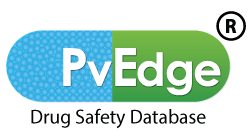The pharmacovigilance industry is increasingly turning to Artificial Intelligence (AI) to enhance the safety and efficiency of drug monitoring processes. With the sheer volume of safety data generated daily, AI-powered tools can help pharmaceutical companies stay ahead of potential issues. AI tools for pharmacovigilance literature are making a huge impact by improving information extraction, data mining, and natural language processing (NLP). In this blog, we’ll look at how these technologies are shaping the future of drug safety monitoring.
Information Extraction:
One of the most exciting advancements in AI for pharmacovigilance is the ability to automatically extract valuable information from various literature sources. AI tools like PvEdge® use sophisticated algorithms to identify key details from research papers, clinical trials, and adverse event reports. By extracting relevant data, these tools help organizations save time and reduce human error, allowing more accurate and faster safety assessments.
Natural Language Processing (NLP):
NLP is a branch of AI focused on enabling machines to understand and process human language. In pharmacovigilance, NLP allows systems to interpret text from unstructured sources, such as medical journals and patient reports. By converting these text-based sources into structured data, AI systems can identify critical safety signals and trends. PvEdge® incorporates NLP to extract and organize data effectively, providing valuable insights that were previously time-consuming to gather manually.
Data Mining:
Data mining uses AI to analyze large sets of data and find patterns, relationships, and potential risks. In the context of pharmacovigilance literature, AI can process millions of data points across multiple sources, helping identify rare adverse events or potential safety concerns more efficiently. AI-driven data mining tools allow pharmacovigilance professionals to focus on analyzing and making decisions based on the insights gathered, instead of spending time sifting through raw data.
Information Retrieval:
As the volume of pharmacovigilance literature grows, finding relevant information quickly becomes crucial. AI-powered information retrieval tools make it easier to search for specific data points or research articles. These tools enhance the search process by ranking articles or studies based on relevance, improving accuracy in identifying important safety information.
AI-powered literature tools are revolutionizing pharmacovigilance by automating tedious tasks and improving the accuracy of data analysis. Technologies like information extraction, NLP, data mining, and information retrieval are transforming how drug safety is monitored, helping professionals stay ahead of potential risks.
At Sarjen Systems Pvt Ltd, we are committed to advancing pharmacovigilance practices through cutting-edge AI tools like PvEdge®, which streamline and enhance drug safety monitoring. The future of AI-powered pharmacovigilance looks bright, with these technologies paving the way for safer and more efficient drug safety processes.



